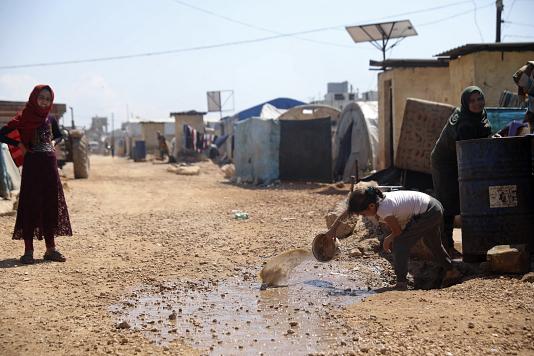Driven from their homes by war and unrest, up to 10 million of the world’s 70 million refugees live in crowded camps and informal settlements. Now comes a new threat: the coronavirus rampaging across the globe.
Almost none of those who live in the refugee camps have been tested for the virus. While the relative isolation of many camps may have slowed the virus’ spread, none is hermetically sealed.
Without testing, the virus can spread unchecked until people start showing symptoms. If it does, there will be few if any intensive care beds or ventilators. There might not even be gloves or masks.
“Testing is in short supply even in New York and Norway, but it is nonexistent in most of the countries in the [global] south for the people we try to help,” said Jan Egeland, the head of the Norwegian Refugee Council.
In Syria’s war-ravaged Idlib province, only one small health facility is equipped to receive suspected coronavirus cases. In Bangladesh, aid workers are racing to build isolation facilities in the world’s largest refugee camp. In two sprawling camps in Kenya, Somalis who survived decades of famine and war fear the worst is yet to come.
“If it’s killing people daily in America, then what do you think will happen to us?” asked Mariam Abdi, a vegetable vendor in Kenya’s Dadaab camp, where 217,000 people live in endless rows of tents. “We will all perish.”
In many camps, cramped conditions and poor infrastructure can make it impossible to practice social distancing and frequent hand-washing.
There are no official figures for the number of refugees who live in camps, but Egeland estimates they make up 10% to 15% of all refugees and displaced people, a population the U.N. estimates at more than 70 million.
Refugees have already tested positive in Italy, Germany, Iran, Australia and Greece, where authorities said Tuesday that 150 people living in a quarantined hotel for asylum-seekers had contracted the coronavirus.
The coronavirus has already appeared in Syria, where the decade-long civil war has displaced more than half of the population of 23 million. At least 350 health facilities have been bombed, mostly by the government. More than 900 medical staff have been killed and countless more have fled.
Source: LA Times
